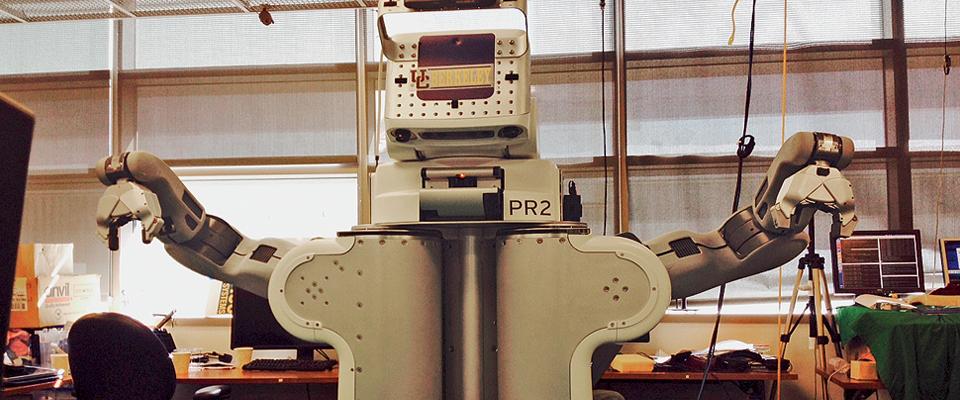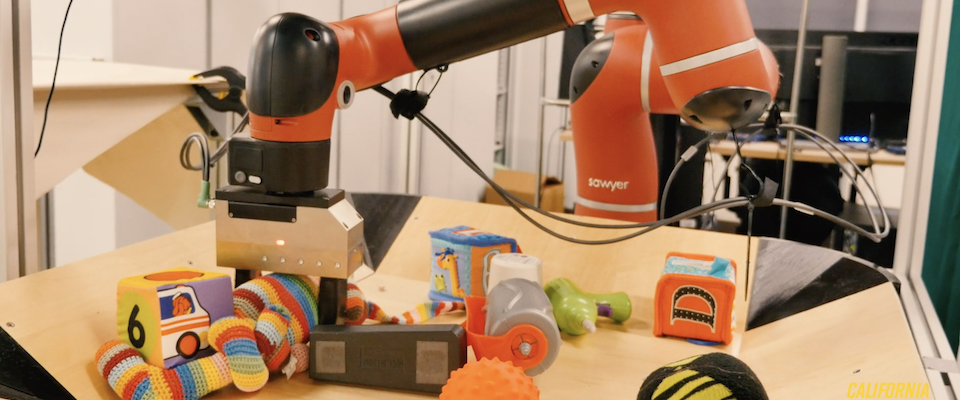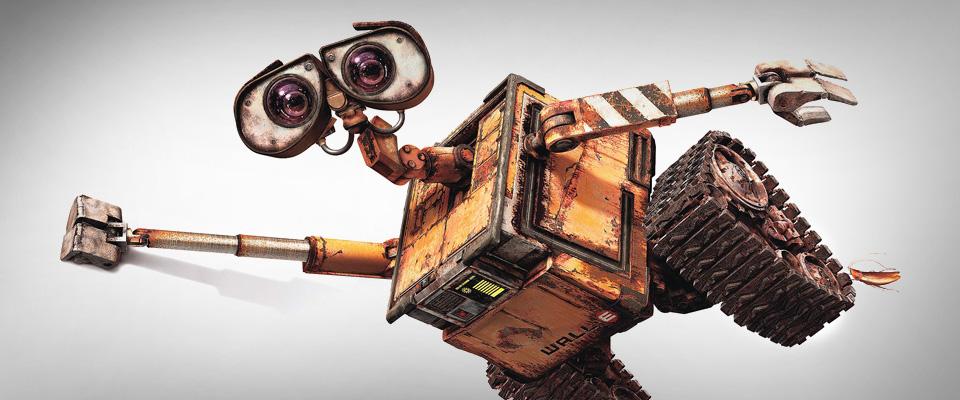BRETT the robot is a knot-tying whiz; it can tie an overhand knot, square knot, figure 8, and hitch. Sure, there are robots out there that drive cars, detonate roadside bombs, and even collect rock samples from the surface of Mars, but what makes BRETT special is not what it can do, but how it came by its modest talents.
BRETT (whose name stands for “Berkeley robot for the elimination of tedious tasks) resides in the lab of UC Berkeley robotics professor Pieter Abbeel, who envisions a future in which robots act as apprentices: watching us, learning from our actions, and refining their skills on their own. The concept is called apprenticeship learning, and on a recent trip to Abbeel’s lab, doctoral student Sandy Huang demonstrated how it works.
Huang placed a rope on a table in front of the 400-pound robot and hit a few keys. BRETT raised its mantis-like head and extended its arms. Members of Abbeel’s team had previously treated BRETT to 75 knot-tying lessons, each time holding its hands (or claw-like grippers) and carefully taking it through the motions.
“It’s like with a kid,” Abbeel says. “You don’t just tell a kid, ‘Hey, do this.’ You have to demonstrate the actions so the kid can watch and learn and later apply that knowledge.”
Huang’s computer screen provided a window inside BRETT’s “brain.” Five images appeared showing ropes in varying positions, close matches picked from its database. BRETT then compared the demo images to the new rope position and devised an entirely new set of motions. It reached down, grabbed the ends of the rope, and—in three deliberate steps over a few minutes—tied a simple knot. It was hard not to cheer.
Deformable objects such as rope or fabric pose a challenge for robots because each time they encounter the same object it may appear different. Now Abbeel’s lab is working on an algorithm that will let BRETT learn how to fold laundry.
“We’re not trying to solve laundry. We’re not trying to solve knot tying,” says Abbeel. “Ultimately, we want robots to be able to learn anything humans can demonstrate. That’s the beauty of it. That’s the goal.”
The prospect of robo-butlers doing our chores has appeal, but Abbeel believes the technology will ultimately offer more meaningful applications, such as assisting the disabled or even performing unsupervised surgeries.
And learning from real-time demonstrations is just the beginning. In the near future, Abbeel believes robots will learn new skills by finding instructional guides and videos on the Internet. In fact, Berkeley researchers are already collaborating on a massive database of robot-friendly educational information called “Robobrain.”
“Once a robot really knows how to learn,” he says, “you can just give it a million computers and it can learn a million things at once.”
If this is starting to sound like the plot of a sci-fi movie, Abbeel says not to worry; robots are not taking over tomorrow. “We’re just excited that they can tie a knot!” he says. “Just come and visit our lab and you’ll see why you don’t have to be scared.”
If you do, BRETT will be there. Watching. And learning. And biding his time.
From the Winter 2014 Gender Assumptions issue of California.





















